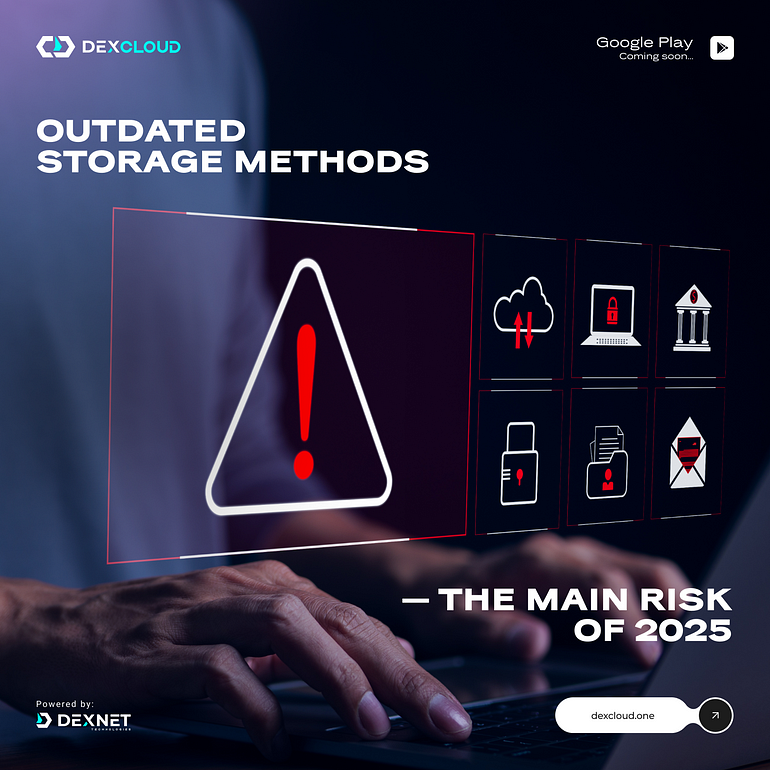Outdated storage methods — the main risk of 2025
 Dexnet
DexnetThere was a time when we hid important documents in a safe. Then came flash drives tucked into desk drawers. Today, it’s even easier: Google Drive, Telegram, phone galleries.
Convenient? Yes. Secure? Not even close.
The paradox is that with every step forward, our files become more vulnerable. We entrust our digital lives to clouds built for comfort — not for privacy. And sometimes, we pay too high a price for that.

From physical to digital — and straight to loss of control Flash drives get lost. Hard drives break. Centralized clouds get hacked. One server crash. One phishing email. And your files are no longer yours.
Real cases:
Dropbox (2022): Hackers gained access to internal systems and source code. The breach began with a phishing attack targeting employees. Over 68 million user accounts were potentially compromised.
Microsoft (2023): The hacking group Storm-0558 breached corporate — including government — accounts. Access keys for Azure data were compromised. Users learned about it from the media.
Google Fi (2023): Attackers accessed user metadata — including numbers, message timestamps, and durations — via a vulnerability in a third-party partner.
The issue isn’t just human error — it’s the architecture. One server = one point of failure. One breach = millions at risk. And no user has control over what’s happening behind the scenes.
Why the classic “cloud” is just a polished illusion
Inside a centralized service, your file is like an unlocked suitcase in a shared closet.
Admins have keys. Contractors have logs. Hackers have a chance — and it is a chance to get everything.
This isn’t private storage. It’s rented space in someone else’s office — with glass walls.
DexCloud: a new logic of storage DexCloud was built to rethink the very idea of cloud storage. It’s not a data center. It’s a decentralized network of independent nodes (DexNode).
How it works:
Your file is split into fragments
Each fragment is encrypted
Fragments are distributed across different DexNode
Five backups are created and migrate between nodes
Only you can access the file via a unique seed phrase
No central server. No “total loss” risk. No prying eyes.
Why it matters
No admin can view your files
A single fragment reveals nothing
No single node holds the full file
Without your seed phrase, even the system can’t access your data
You can start with 20 GB free for 30 days to try it out.
And if you pay with DEXNET tokens, you’ll get 20% off your subscription.
Yes, the web version is already live. And the mobile app is coming soon — so you can take DexCloud with you anywhere.
Conclusion Flash drives get forgotten. Clouds fail. It’s time for something new. We’ve been told that convenience comes at the cost of privacy. But in 2025, that’s not a compromise — it’s just outdated thinking.
DexCloud isn’t just an alternative. It’s a new privacy standard — where you are the only one in control.
Time to take back control — try DexCloud now!
Subscribe to my newsletter
Read articles from Dexnet directly inside your inbox. Subscribe to the newsletter, and don't miss out.
Written by
